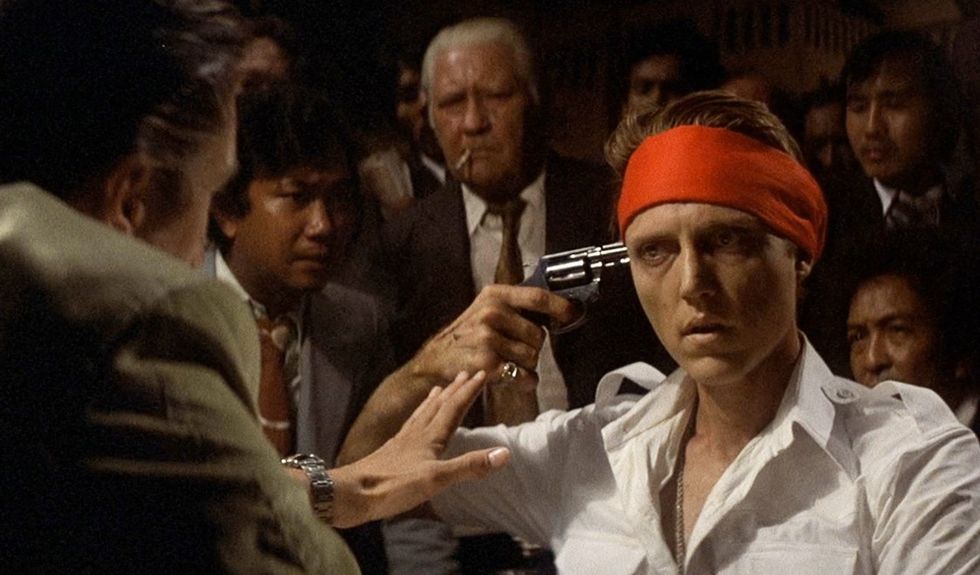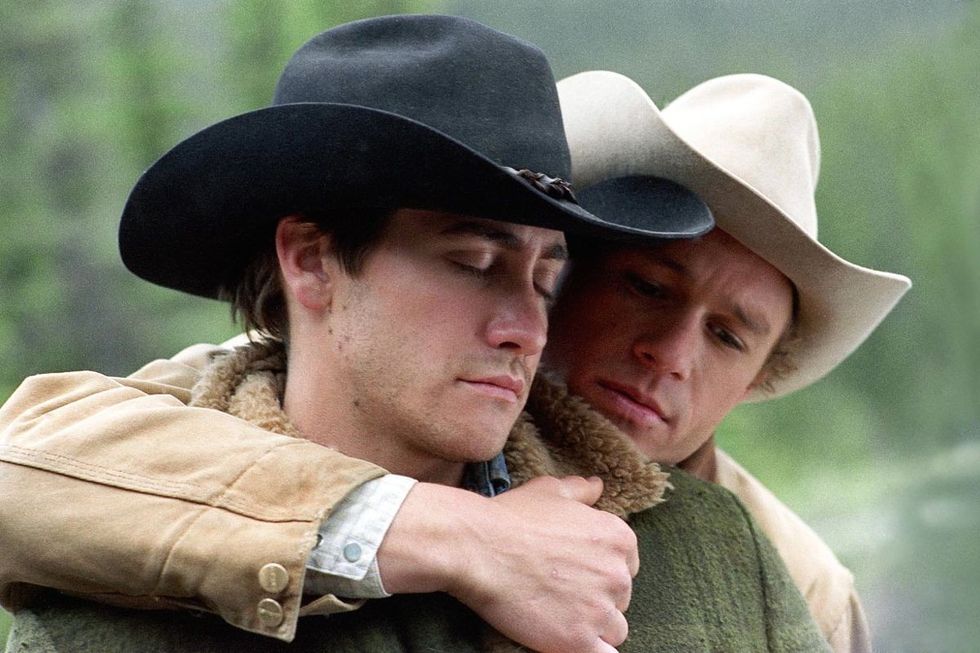New Doc 'Take Your Pills' Illustrates the Power of Visualizing Adderall Addiction
Alison Klayman's new documentary identifies why a desire for increased success can prove quite destructive.

If you've ever felt like you're not at your fully productive self, groggily unable to concentrate and focus on multiple tasks at hand, then there's a good chance you've considered (or have already been prescribed) a "pep drug" meant to give you an additional boost. Today, Adderall is the defacto drug of choice for treating patients with ADHD, and, according to the eye-opening press notes for filmmaker Alison Klayman's new documentary Take Your Pills, adults recently surpassed children as the drug's leading users.
With an overabundance of consumer reliance on prescription meds, Klayman's film dives deep into the history of Adderall—originally created as a nasal decongestant—and its effects, going as far as to examine why American society finds it so necessary to be "on something" in order to present the best version of themselves.
A person's human capital value is a concept brought up in the film, and once you learn that it begins while a baby is still in the womb—blast some Mozart for your baby in utero and chances are its human capital will rise as it exits the birth canal—you see how disgustingly consumerist and performance-driven this line of thinking is. In order to be the best, we have to go beyond human means.
After having its world premiere at SXSW, Take Your Pills premieres on Netflix this Friday, March 16. Klayman spoke with No Film School about being chosen to direct this topical story, how she found a wide-ranging cast of men and women struggling with Adderall, and how a hashtag provided an incredibly authentic peek into a world of those reliant on prescription medication.
No Film School: Was the subject of the rise and reliance on "pep pills" in the United States something you had been looking to dive into for a long time? Was it the involvement of Netflix that finally got it off the ground?
Alison Klayman: Netflix had reached out to me after talking with Maria Shriver and Christina Schwarzenegger about doing a film about Adderall. They had been searching for a director. Every filmmaker has their long list of topics that interest them and that they want to do a film about. While this wasn't necessarily on my list, curiosity is definitely the thing that drives me, and I like to take on new challenges. I thought, "Okay, what would I be interested in looking at if I were to make a movie about Adderall?"
The story had two elements that really work for the kinds of projects I'm interested in. One is that it's deeply personal. Obviously, I know that Adderall effects people's lives, and as soon as I started to talk to people, I realized it really touches almost everyone's lives in America. It's somewhat wrapped up in their identities.
I found that people I was very close to had a lot of experiences with touching on the subject, and yet we'd never talked about it. I think there's a real human dimension that needs to be exposed to the light a little bit more, to let these people talk about all of these conflicted experiences.
"A question I had was 'why is this such a prevalent drug right now? What is it that it's answering for people? What are the desires (and the culture) that make people take it more than anywhere else in the world?'"
The second element is that the subject represented a snapshot of America right now. A question I had was "why is this such a prevalent drug right now? What is it that it's answering for people? What are the desires (and the culture) that make people take it more than anywhere else in the world?"
In general, Americans take more prescription medications than the rest of the world. But why this particular drug?

NFS: The film shows students using for academic enhancement, a music manager is using for enhanced performance at work, former NFL player Eben Britton documents how his experience with Adderall helped him work through nagging injuries, etc. How did you structure the presentation of the range of issues people encounter on these prescription drugs?
Klayman: When I first thought about how I wanted to approach the film, I found that I was more interested in adult usage, college-age and older. There have been films in the past [about youth] and there's a good Frontline series, Medicating Kids, about that subject. The story of medicating children is something I felt had been seen before.
As I was tackling more adult concerns, I quickly found out that adults are now the majority of the stimulant-taking population in America. All adults were children once, and so it was inevitable that we'd have characters who also were prescribed from a young age. While kids could be part of the story, I had never seen a film about adult use specifically.
We had a team that included journalists and people with medical anthropology backgrounds, and so we did a lot of reading and watching of things to create buckets of the kinds of stories we thought we'd be looking for. That list kept growing and growing.
For casting purposes, we had a loose idea of featuring college students, people strongly identifying with ADD, those who had participated in sports, finance, Silicon Valley, etc. Then once you start to find people that really fit, they start to check off multiple boxes because people aren't just one thing.
"It sounds exciting because that was our idea from the beginning, but you don't try to look for things that prove what you thought."
The goal from the beginning was to be a film that doesn't just root itself in one story, and the best feeling was how these people who come from vastly different backgrounds would start to say interesting things that synched up; there were all of these American things that kept coming up.
The anxieties that everybody felt—even though we're not to trying to flatten them all and say they're all the same—was something everyone talked about, trying to be the best, or just trying to find that edge that will make things a little bit better for them. I thought that was really interesting. It sounds exciting because that was our idea from the beginning, but you don't try to look for things that prove what you thought. Their pictures started to come together.
NFS: The film is bookended by frantic, 1980s video game-style graphics and sounds (at one point, it literally resembles the design of Pac-Man). What was it about that retro, analog aesthetic that felt appropriate for this material?
Klayman: The gamified idea came from the belief that we have to always "keep leveling up," and Wendy Brown's criticism of neoliberalism and how we function in a late-stage capitalist milieu [inspired this choice]. As Americans, we're all trying to keep leveling up and keep up the endless cycle, and so the concept made me think of video games. The analog games were released right around a time in the 1980s and 90s where we began seeing a resurgence of prescription stimulants.
We matched up a lot of different things due to the film very intentionally having visual mashups and being a bit frenetic. While it has a lot of personal and painful stories within it, I couldn't imagine a lyrical movie about Adderall, for example, and so I felt like it had to be a little bit coming at you. I think the video game aspect works for that.

NFS: Regarding the hyper-stylized effects, sounds, and quick cutting that recreate a user's immediate high after he/she consumes these "pep pills": What went into blocking out the rapidity of your visuals? Had you looked at "drug awareness," drug-fueled movies of the past as a style guide?
Klayman: Hmm, what's a good example that you're thinking of?
NFS: Maybe something like the style of Requiem for a Dream, as the consumption ramps up and the quick cuts recreate the physical sense of what a user is going through.
Klayman: For sure, and while I wanted the film to be an heir to movies like that, I was into this idea of the Adderall aesthetic specifically. Requiem for a Dream and other films that deal with drug use incorporate a number of drugs that each have their own symptoms, and the viewer can feel what it's like (and directors may know what the audience is expecting to see) if they're viewing a film about marijuana or heroin, for example.
Because of this, I didn't spend a lot of time dissecting other movies. Limitless was one of the only films that was closest to what people think about when they talk about Adderall, even incorrectly. Adderall doesn't quite hold the promise of the "Limitless drug" in that movie, but I think that's what people are looking for. That's something that was talked about a lot.
"There's almost this deadly, razor edge humor about the 'gotta grind' or 'gotta do this' mentality, and so I took a lot of inspiration from the cultural production of the moment of how people are talking about Adderall."
From the very beginning of thinking about the style of my film, one of the things I would do, rather than watch films, was go on Twitter and look up #Adderall or #studydrug, and I would see what the conversation was.
There often were a lot of memes and gifs associated with the hashtag, and they featured a lot of pills and skeletons. There's almost this deadly, razor edge humor about the "gotta grind" or "gotta do this" mentality, and so I took a lot of inspiration from the cultural production of the moment of how people are talking about Adderall.
NFS: There's 2D animation employed for the historical recreations (often describing a 20th-century doctor's medicinal discovery as a means to a personal ailment or the physical ailment of a family member) that describe how these pills came to fruition. Did you work with an animation team to create this?
Klayman: Yeah, that was all the work of Leah Shore, a really talented animator. What she did for us needed to serve the story (it's a little tamer than the work she normally does) while also having a little bit of fun with the historical scenes.
I didn't just want to use stock footage for the historical parts, and so I worked with Leah for that, and then with another video artist to create the world of Goldman Sachs. And so we had two individual artists working with my team and sometimes we'd feature a combination of live-action shoots and then we'd recreate the world [with animation]. We were doing a lot of things at once.
"The more creatives [on Adderall] we spoke with made us realize that it's not necessarily being used to make them more creative. It's being used due to the belief of having more hours in a day to make stuff."
It felt like something that was heterogeneous, something drawing from the entirety of motion. We don't have a section in the film about the internet specifically, but in an age of digital media production, you can literally look up anything, you know? This really has only become true in the last couple of years, but the fact that you can find any old TV show or a picture of this or that, plays into the idea of Adderall and a desire to find and do everything [at once].
If you could make anything and find everything online, don't you want enough time to go and open all the doors? That's a line in the opening credits, that there's 10,000 doors and [the brain] just wants to open them all.
The more creatives [on Adderall] we spoke with made us realize that it's not necessarily being used to make them more creative. It's being used due to the belief of having more hours in a day to make stuff. While there's not a section about the internet featured in the film, all of our designs and looks and feels gesture toward it.
"I think it's a credit to the whole team and their research—and of course, our subjects—that we were able to have so many people speak as themselves, sharing their very personal experiences."
NFS: You mentioned the Goldman Sachs man interviewed in the film. While most of your interview subjects are seen head-on, this finance worker, who recounts his pill-popping, around the clock job, is blurred out. It's both for his privacy and maybe as a metaphor for the being a faceless employee to an almighty boss. How did you conceptualize how to depict his story?
Klayman: Well, at the beginning of production I was ready (and almost expected) for the film to have more anonymity. I think it's a credit to the whole team and their research—and of course, our subjects—that we were able to have so many people speak as themselves, sharing their very personal experiences. But we knew that to speak to someone currently in a high power position or someone dealing with high stakes—we spoke to lawyers, people in media and politics, etc.—we'd have to do [what we could].
That is the man's voice that you hear in the film, and he was a real interview. The body that you see, however, is that of an actor's; it's not the man being interviewed. We purposely blurred out his face for that reason, like you said. It's wasn't like, "Here's this guy pretending to be another guy." It's more like he's any nameless analyst—he could be anyone—and that's why I made his boss in the film a shadowy figure as well. That story took place within Goldman Sachs, but it could have been anywhere.
See all of our coverage of SXSW 2018.
'Take Your Pills' premiered at the 2018 SXSW Film Festival. It will be available on Netflix starting March 16th.















